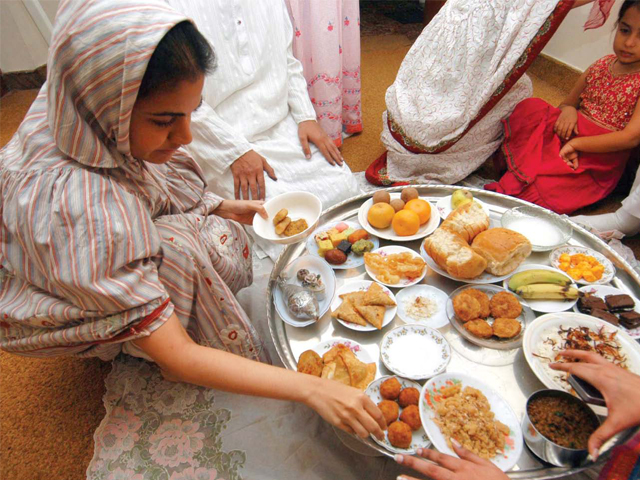
Traditionally, Bohris eat in a ‘thaal’ or a steel serving dish of mammoth proportions that is laden down with small portions of the various delights of their cuisine. It is placed about a foot off the ground on a kundli (stand) for the family that gathers around for a meal eaten out of the same dish.
The new year’s eve is widely referred to as the thaal’s birthday, with the thaal symbolising the hope of the coming year’s prosperity. It is treated with respect and as a token of respect it is laden with as many food items as it can take.
The norm is to have 52 dishes on the thaal this night, in remembrance of the spiritual leader of the community, Syedna Mohammed Burhanuddin who is the 52nd dai (leader). Usually every small item on the thaal is used to make up the number 52. Individual sweetmeats, fruits and even the salt, with which it is mandatory to start and end every meal, is counted to make up the number 52.
Food symbolises individual blessings and the variety is an implicit prayer in hope of being blessed in various ways in the coming year. This concept is called ‘sakhan’.
Before the tasting of the salt, there is the ritual of ‘wadhana’ which entails passing a coconut over the thaal seven times in a clockwork direction. This tradition is often performed on birthdays as well, and since new year’s eve is considered the thaal’s birthday, it is given the same honour.
Bohris start their meal with a sweet dish and alternate with savoury dishes as they progress along the courses. After wadhana comes the tasting of the salt, which is followed by ‘sundaina’ or ‘shukrana’. This is a small dish of sweetened rice which is always eaten before a meal to commemorate a happy occasion.
New clothes are worn in a symbolic act of hope that the forthcoming year will have no shortcoming of money. Those who can afford it buy gold.
The entire tradition of the first night of the new year comprises rituals that denote the hope of a blessed year to follow.
Published in The Express Tribune, December 8th, 2010.



1719211536-0/BeFunky-collage-(81)1719211536-0-165x106.webp)



















COMMENTS
Comments are moderated and generally will be posted if they are on-topic and not abusive.
For more information, please see our Comments FAQ